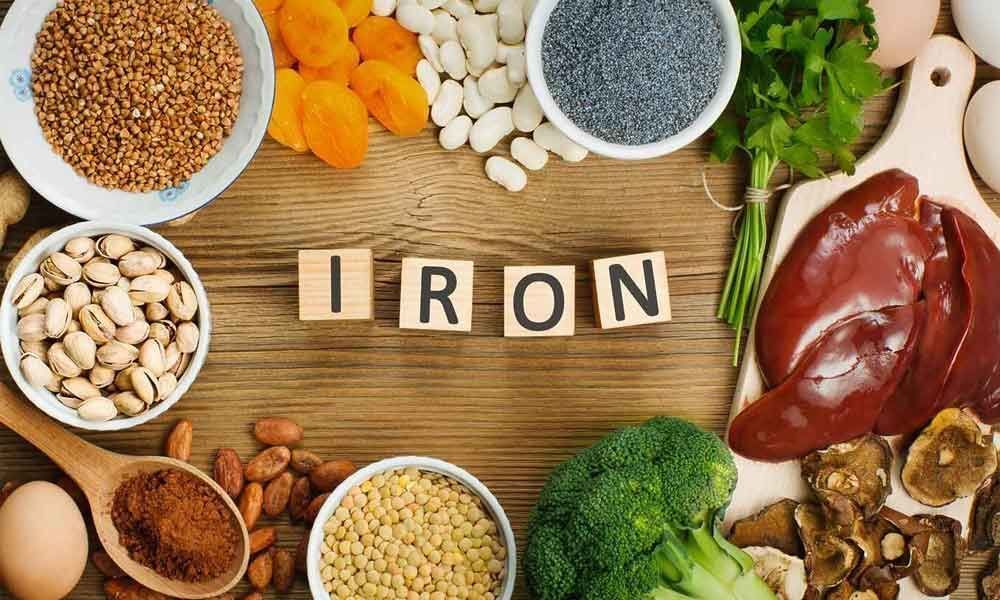Live
- Former SC judge V. Ramasubramanian appointed as NHRC Chairperson
- Shyam Benegal: A true inspiration for aspiring film-makers
- Heavy snow forecast in Japan through Tuesday
- Legendary film-maker Shyam Benegal is no more
- Hackers steal over $12.7 billion in over 1,000 crypto heists to date
- BGT: 'Rohit is short of confidence with self-doubts', opines Manjrekar
- Gold gains 30 pc in 2024, silver 35 pc up on COMEX this year: MOFSL
- Delhi HC dismisses anticipatory bail plea of ex-IAS trainee officer Puja Khedkar
- Untouched Goa Beaches You Must Visit in January
- Muzigal launches its State-of-the-art Music Academy in Nallagandla, Hyderabad
Just In
Unhealthy food habits among women lead to Anaemia


According to recent study by ICMR on anaemia trends in India from 2008-18 period, it has been reported that Telangana has the highest percentage of women suffering with severe anaemia
According to recent study by ICMR on anaemia trends in India from 2008-18 period, it has been reported that Telangana has the highest percentage of women suffering with severe anaemia
According to World Health Organisation (WHO) , globally 38.2 per cnet pregnant women are affected by anaemia.
National Family Health Survey 2015-16, reports that 50.3 per cent of pregnant women in India, and 49 per cent of pregnant women and 57 per cnet non-pregnant women in Telangana are anaemic.
Anaemia is a condition in which the number of red blood cells or their oxygen carrying capacity is insufficient to meet physiological needs which may vary by age, sex, altitude, smoking, and pregnancy status.
Lack of hemoglobin leads to iron deficiency, which causes anaemia and various other complications. Anaemia in pregnancy is associated with low birth weight and increased risk of maternal and prenatal mortality.
The WHO lists iron deficiency alongside deficiencies of folate, vitamin B12 and vitamin A as reasons for anaemia.
Nearly half a billion women of reproductive age across the world, mainly in south Asia and Africa are said to be affected by the disorder, also associated with adverse maternal and neonatal outcomes.
The WHO's member countries have resolved to cut down anaemia prevalence by 50 per cent in women of reproductive age by 2025.
According WHO report, if a pregnant woman suffers from anaemia, the foetus might not get enough oxygen on account of the low RBC levels of the woman and she would not be able to withstand the growth of the foetus.
As many as 51.8 per cent of teenage Indian girls are anaemic due to low haemoglobin levels lower productivity and cause illness and death, and have impact on economic cost.
The loss of gross domestic product to anaemia was estimated at Rs 1.50 lakh crore in 2016 in India, more than three times the health budget for 2017-18.
Of late, the Hyderabad district health administration has took up a mass screening drive to identify iron deficiency in girls of school going age.
It is found every sixth girl student of State-run school in Hyderabad, aged between 12 and 16 years, suffers from severe anaemia.
Anaemia or iron deficiency among children and infants in the city is growing rapidly due to unhealthy lifestyle and junk food.
The most common signs for anaemia is lethargy, unexplained fatigue, pale skin, and pale eyes.
The more severe form of anaemia is characterised by a behaviour called as pica where the child builds a tendency to eat dirt, clay, and other unusual substances.
In case of pregnant women detected with anaemia in the State was 6.77 lakh in 2018-19. In 2017-18, it was 5.92 lakh and just two years down the line in 2016-17, the number was 4.29 lakh.
Hyderabad has had the highest number of detected anaemia cases, with 1.09 lakh cases in 2018-19, the large number could be attributed to the high population of the city, according to the Union Ministry of Health and Family Welfare data.
However, the data shows that among the districts, Warangal (Urban), Sangareddy and Suryapet had the highest number of anaemia cases 38,318, 35,97 and 29,722 respectively.
The data reveals that teenage girls in urban areas were more likely to have normal haemoglobin levels compared to rural areas.
According to recent study by ICMR on anaemia trends in India from 2008-18 periods has reported that Telangana has the highest percentage of women suffering with severe anaemia, wherein haemoglobin levels are less than 7g/dL.
It means the prevalence of anaemia among women in Telangana is on the rise and needs to be cured.
It is also reported that the percentage of women with severe anaemia in Telangana in the year 2017-18 was 8.2 per cent, compared to 2-4 per cent in most of the states. The report attributes that it is due to food inadequacy.
It also suggested that iron intake in pregnant women of Telangana is very poor that is causing health issues on the baby like impairment of cognitive functions.
Food inadequacy is high in the State among women of all age groups. As a result, the iron intake through food consumption is very low.
Suggested diet consists of food items that are rich in iron.
Animal foods such as liver, red meat, fish, dates, jaggery, green leafy vegetables such as spinach, broccoli, Sesame seeds, pumpkin seeds, are some such products that contain iron.
Follow a diet that consists of Vitamin C such as amla, lime, and lemon, all citrus fruits such as oranges, musumbi, strawberries and guava. Vitamin C helps in the absorption of iron in the body.
- Rajendera Kumar

© 2024 Hyderabad Media House Limited/The Hans India. All rights reserved. Powered by hocalwire.com






